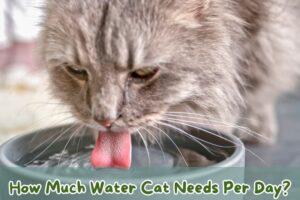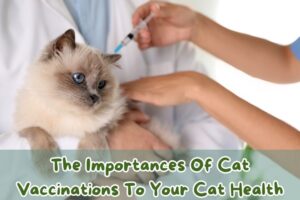Hairballs are a common problem in cats, caused by the ingestion of fur during grooming. They can cause discomfort and even vomiting, which is why it is important to understand their causes and how to prevent them. There are several things you can do to help your cat avoid hairballs, such as brushing them regularly, providing them with a good diet, and giving them hairball remedies.
What is hairball and its cause?
A hairball is a mass of hair that is swallowed by a cat and then regurgitated. Cats groom themselves regularly, and they ingest small amounts of fur with each lick. This fur can build up in their stomachs and form hairballs.
Several factors can increase a cat’s risk of developing hairballs:
- Shedding: Cats shed more hair during certain times of the year, such as spring and fall. This can increase the amount of fur that is ingested and lead to hairballs.
- Long-haired breeds: Long-haired cats are more likely to develop hairballs than short-haired cats. This is because they have more fur to groom and are more likely to swallow it.
- Frequent grooming: Cats that groom themselves frequently are more likely to swallow hair. This is especially true of cats that are indoor cats, as they have less access to dirt and other debris that can help remove loose fur from their paws.
- Low-fiber diet: A diet that is low in fiber can make it difficult for cats to pass hairballs. This is because fiber helps to bulk up stool and make it easier for hairballs to pass through the digestive tract.
- Stress: Stress can also increase a cat’s risk of developing hairballs. This is because stress can cause cats to groom themselves more frequently, which can lead to them swallowing more hair.
Symptoms of hairball in cats
Hairballs are a common occurrence in cats. They are formed when cats swallow loose fur during grooming. The fur can clump together and form a ball in the stomach.
Most hairballs pass on their own. However, there are some signs that your cat may be having trouble passing a hairball and may need to see a veterinarian.
Here are some symptoms of hairballs in cats:
- Vomiting: This is the most common symptom of hairballs in cats. The vomit may contain hair or may be clear or yellow.
- Gagging: Your cat may gag or retch as they try to pass a hairball.
- Lethargy: Your cat may be lethargic or seem to be in pain.
- Loss of appetite: Your cat may lose their appetite if they are having trouble passing a hairball.
- Constipation: Your cat may be constipated if the hairball is blocking their intestines.
Treatments to the hairball in cats
Hairballs are a common problem in cats, caused by the ingestion of fur during grooming. While they usually pass on their own, there are some things you can do to help prevent and treat them.
Treatment
- Groom your cat regularly: Brushing your cat regularly is the most important thing you can do to prevent hairballs. When you brush your cat, you remove loose fur before it can be swallowed. This will reduce the amount of hair that your cat ingests, and it will also make it easier for hairballs to pass through the digestive tract.
- Try cat food formulated for hairballs: Some cat foods are specially formulated to help reduce hairballs. These foods typically contain added fiber, which helps to bulk up stool and make it easier for hairballs to pass through the digestive tract. They may also contain other ingredients, such as petroleum jelly or probiotics, that help to lubricate the digestive tract and make it easier for hairballs to pass.
- Add more fiber: Fiber is essential for preventing hairballs. Fiber helps to bulk up stool and make it easier for hairballs to pass through the digestive tract. Giving your cat a teaspoon of psyllium husk powder mixed with water
- Use a hairball product or laxative: There are many over-the-counter hairball products available, such as petroleum jelly, lard, and malt paste. These products can help to lubricate the digestive tract and make it easier for hairballs to pass. Laxatives can also be helpful in removing hairballs.
- Discourage excessive grooming: Excessive grooming can increase the risk of hairballs. If your cat is grooming excessively, you can try to deter them by providing them with a scratching post and by using a feliway diffuser.
- Use baby wipes: Baby wipes can be used to remove loose fur from your cat’s paws before they have a chance to ingest it.
- Increase water intake: Water helps to keep the digestive tract moving and can make it easier for hairballs to pass. You can encourage your cat to drink more water by providing them with fresh, clean water at all times and by placing their water bowl in a quiet location.
- Lubricate the digestive tract: You can help to lubricate your cat’s digestive tract by giving them a small amount of petroleum jelly or another lubricant. This can help to make it easier for hairballs to pass.
When to see the vet?
While hairballs are a common occurrence in cats, there are some situations when it’s important to take your cat to the vet.
Here are some signs that your cat needs to see a vet for a hairball:
- Your cat is vomiting frequently or violently. If your cat is vomiting more than once a day, or if they are vomiting with force, this may be a sign that they have a hairball that is too large to pass on their own.
- Your cat is lethargic or has lost weight. Hairballs can make your cat feel uncomfortable and can also cause them to lose their appetite. If your cat is lethargic or has lost weight, this may be a sign that they are not feeling well and need to see a vet.
- Your cat is straining to pass a hairball. If your cat is straining to use the litter box and seems to be in pain, this may be a sign that they have a hairball that is stuck in their intestines.
- Your cat has a large, hard hairball. If you can feel a large, hard hairball in your cat’s stomach, this may be a sign that they need to see a vet to have it removed.
In general, if you are concerned about your cat’s hairballs, it is always best to err on the side of caution and take them to the vet. Early diagnosis and treatment can help to prevent complications and keep your cat healthy.






